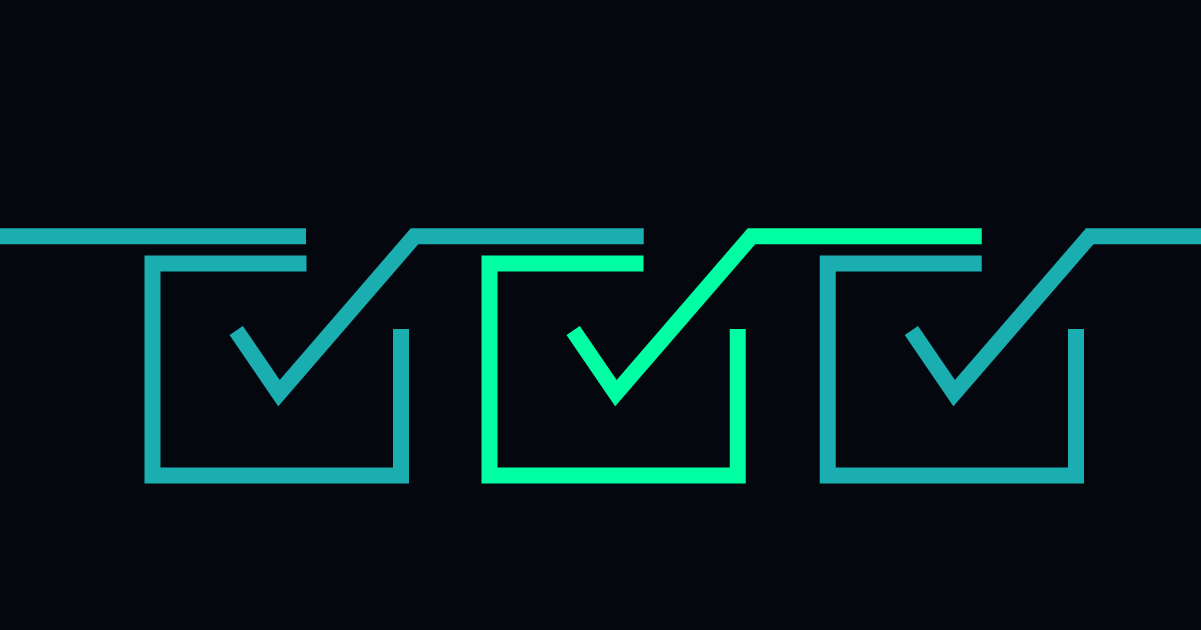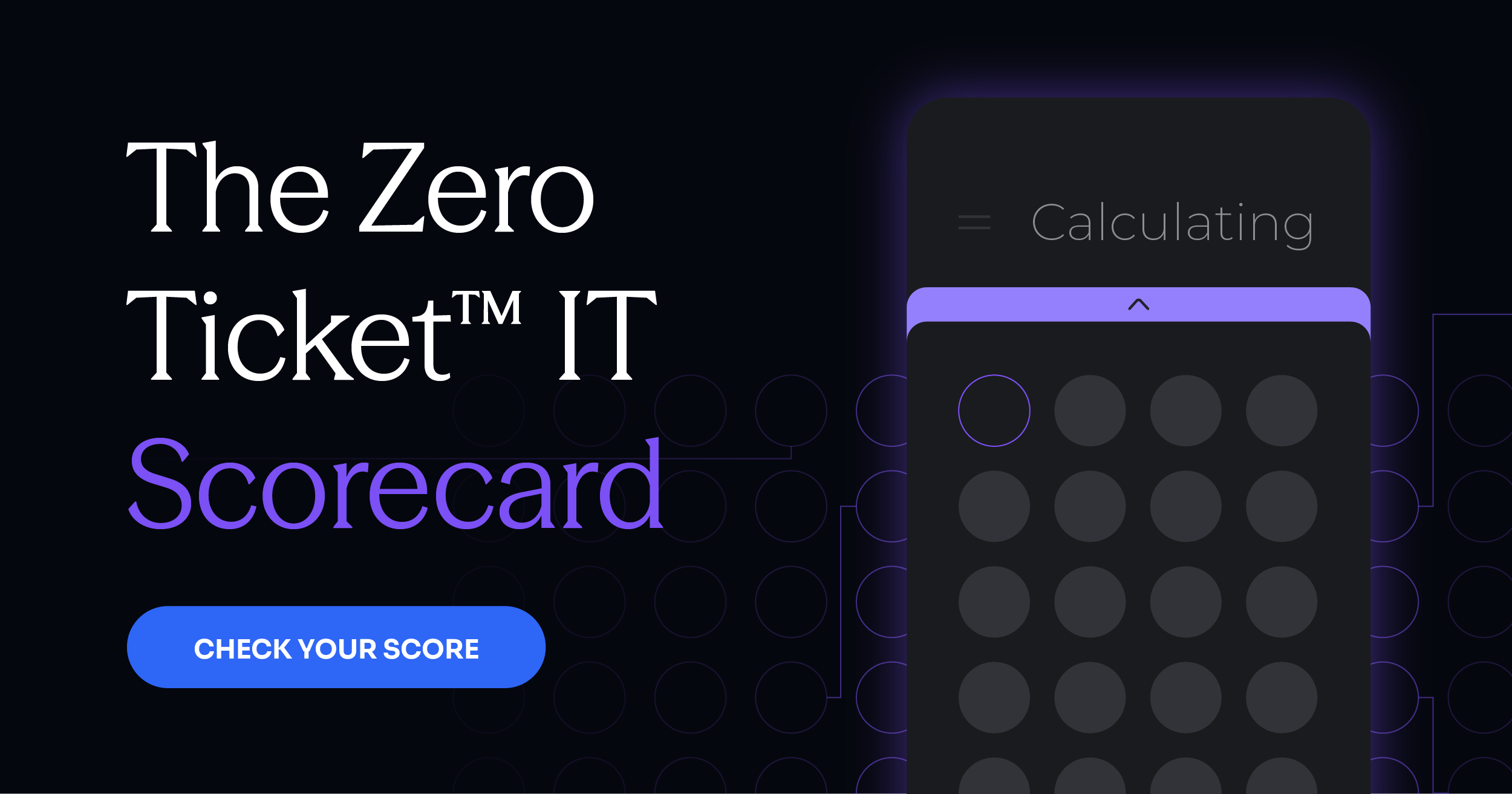
Implementing a Zero Ticket™ Operations Maturity Model
Subscribe to receive the latest content and invites to your inbox.
You bought the chatbot. You built the self-service portal. You shifted left like the IT operations and engineering best practices told you to. And yet, tickets keep coming, alerts keep escalating, and your team keeps firefighting.
Why is this craziness still happening?
Because shifting left, while helpful, is a singular tactic that is often mistaken for total transformation. It’s important to IT operations and engineering, but it’s not the full arsenal.
If you’re serious about moving from reactive work to proactive, autonomous operations, you need a higher-level view. You need a strategic framework that actually measures operational maturity.
This is where our Zero Ticket approach to IT maturity comes into play and changes the whole game.
Shift Left: Necessary, But Not Sufficient
Let’s give credit where credit is due: shift-left approaches like self-service portals, virtual agents, and user-side troubleshooting tools do reduce some burden on the service desk. When your L1 ticket volume decreases and VPN requests get handled without human intervention, your IT team is left with some extra breathing room (and less hair-tearing).
This setup is good. It’s fine. But it’s also just scratching the surface.
Here’s an uncomfortable truth about IT operations and engineering that you probably already know: you can shift left all day long and still operate in reactive mode.
Why?
Because shift-left often ignores the backend. It doesn't:
- Resolve noisy alerts before they hit the service desk
- Coordinate remediation across siloed systems
- Leverage ticket history to prioritize automation
- Replace manual triage with machine-executed workflows
In short: shift-left helps you cope, but it doesn’t help you evolve.
The Zero Ticket IT Maturity Model
If you want to see the IT operations and engineering big picture, you need a way to figure out how far along you are in transforming from reactive firefighting to proactive, autonomous operations. That’s where our Zero Ticket IT maturity model comes in.
This model lays out four stages of progress, based on our work with some of the world’s largest and most complex IT environments:
Stage 1: Early (Reactive)
You’re operating in classic break/fix mode.
Tickets flood in from both humans and machines, most incidents require manual triage, and your team spends its days in the queue.
Automation is limited to scripts or isolated tools, and processes are heavily dependent on individual expertise.
Stage 2: Developing (Tactical Automation)
You’ve begun automating common service desk requests and suppressing low-value alerts.
Some systems are integrated, but workflows still require human intervention at multiple points.
Your wins are real, but they’re siloed, inconsistent, and not yet changing the operating model.
Stage 3: Maturing (Proactive & Orchestrated)
Foundational workflows are automated across both the human and machine “doors” of IT.
Intelligent agents triage and resolve many incidents before escalation, and integrated tools trigger event-driven workflows without manual handoffs.
Your focus is shifting from resolution to prevention, and you’re using historical data to drive what gets automated next.
Stage 4: Leading (Zero Ticket Operations)
You’re running the IT operation of the future.
Most tickets never materialize because incidents are prevented or resolved autonomously.
AI agents like RITA and Jarvis proactively handle service requests, remediate alerts, and orchestrate fixes across the ecosystem in real time.
Humans focus on governance, strategy, and innovation instead of firefighting.
READ MORE: Automation Mistakes: The Anti-Patterns Holding IT Back
The 4 Elements of Zero Ticket IT
The Zero Ticket IT Maturity Model draws inspiration from four key dimensions:
- Intelligence & Automation – This measures your ability to remove human effort from IT operations and engineering. At lower maturity, automation is patchy and reactive. You might have some scripts here, a chatbot there. At higher maturity, though, AI agents monitor, detect, and remediate issues autonomously, backed by workflows that adapt to changing conditions in real time.
- Tooling & Orchestration – It’s not about how many tools you have; it’s about how they work together. In less mature environments, tools operate in silos with manual handoffs. In mature environments, events in one system can automatically trigger orchestrated workflows in another, with context and data flowing freely between platforms to eliminate swivel-chair operations.
- User Experience & Deflection – This is where culture and technology meet. Mature organizations design seamless, contextual experiences that resolve IT operations and engineering issues instantly, whether through proactive notifications, virtual agents, or background automations. The best ecosystems eliminate the need for a ticket entirely, improving satisfaction while lowering cost.
- Governance & ROI – Automation at scale demands discipline. Mature environments embed role-based access controls, automated approvals, and comprehensive audit trails into every workflow. They also track and communicate business impact (like hours saved, MTTR reduced, or support spend avoided) so automation’s value is visible from the front lines to the boardroom.
These dimensions give you a holistic view of your maturity. They help you identify not just what’s automated, but how well the automations are integrated, governed, and delivering IT operations and engineering outcomes.
If you want to know your exact position on the curve, our Zero Ticket IT Scorecard is the best way to benchmark yourself. But the real goal is to chart a course toward the “Leading” stage and all the benefits it brings, not earn a number.
Give the scorecard a try and see where you land!
Shift Left vs. Maturity Model: A Brutally Honest Comparison
The column on the left helps you tread water. The column on the right builds you a speedboat.
What Leading the Zero Ticket Charge Looks Like:
Here’s how you can be sure that you’re in a mature Zero Ticket IT operations and engineering environment:
- Incidents resolve themselves. Machine alerts trigger automated diagnostics and remediation.
- Tickets disappear. RITA, our tier-1 deflection agent, handles routine requests before they’re even logged.
- Workflows build themselves. Jarvis, Resolve’s AI architect, helps teams design automations in plain language.
- Service desks evolve. Human agents become governance stewards and automation strategists instead of reactive firefighters.
- IT shifts from cost center to enabler. MTTR drops, ticket volumes shrink, and user satisfaction skyrockets.
The paradigm shift to Zero Ticket is already underway. And you can leverage it for your own IT operations and engineering ecosystem.
Final Word: Score Yourself & Use the Old Playbook for Kindling
If you're still measuring success by how quickly you can close a ticket, you're stuck in a legacy mindset. Enterprises that rely on metrics like these will lose time, talent, and bandwidth to organizations that embrace Zero Ticket IT.
Therefore, it's time to ask better questions.
- Can we eliminate the ticket entirely?
- Can we design workflows that prevent escalation?
- Can we make our tools work together to resolve problems before anyone notices?
That’s what our maturity model and our scorecard help you evaluate. It’s your strategic blueprint for moving beyond shift-left and toward meaningful IT transformation, culminating in an improved experience for every employee and every customer.
→ Request a Demo
→ Read The Zero Ticket Future Manifesto






